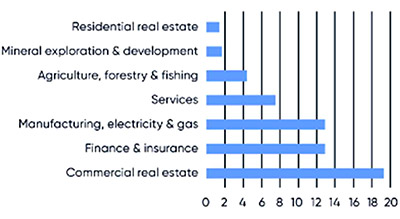Foreign buyer fees under microscope as property investment withers
At a time when Australians are facing the worst housing shortage in living memory, Damian Collins, Managing Director of Momentum Wealth, says it’s time to reconsider the foreign investor surcharge.
It’s no secret Australia is facing a serious housing shortage and the situation looks set to get a lot worse before it gets better, with the shortfall of new homes set to exceed 100,000 dwellings.
The National Housing Finance and Investment Corporation (NHFIC) is forecasting around 148,500 new homes (net of demolitions) to be built in 2022-23. This is expected to fall to 127,500 new homes in 2024-25.
On the demand side, NHFIC says more than 1.8 million new households are likely to form across Australia from 2023 to 2033, driven by the rapid return of overseas migration.
Clearly, the supply of new homes won’t come close to meeting demand.
This shortfall is likely to have a profound impact on first home buyers and renters, in particular. Already, SQM Research reports a national rental vacancy rate of 1.1 per cent at the end of March 2023.
The market is even tighter in Perth and Adelaide where the vacancy rate is just 0.5 per cent.
Tenants lucky enough to secure a lease have faced skyrocketing rents, with a 21.8 per cent surge in rents nationally over the past year. At the same time, low affordability coupled with rising interest rates are also putting a squeeze on first home buyers, particularly in our most expensive states.
Data from the Australian Bureau of Statistics confirms that the past year has seen a marked decline in lending to first home buyers (down 26.8 per cent) and for new home constructions (down 28.4 per cent).
Yet against this backdrop, we continue to discourage foreign investors – who can only buy new property – from adding to our pool of residential housing stock.
Are foreign investors really crowding out the market?
The traditional argument for punitive levels of stamp duty and land tax being applied to foreign buyers has always been that they will “crowd out” the market.
The numbers simply don’t back this up.
The Foreign Investment Review Board (FIRB) reports that just 3,196 foreign buyers were approved in the first six months of 2022/23 (53 proposals were later withdrawn). That’s down from around 5,400 approved proposals for the full-year 2021/22.
Let’s put this into perspective.
In 2021/22, around 180,000 new homes were completed in Australia, and total real estate sales were around 800,000. On those numbers, foreign buyers represented about 3 per cent of all transactions on new property, and less than 1 per cent of total property sales.
That’s hardly a picture of local buyers being crowded out by overseas investors.
Rethinking approach to foreign investment
To be clear, I’m not calling for an end to foreign investment policies altogether. It’s certainly a good idea to closely examine foreign investment in Australia, rather than allowing unfettered access to our national assets.
However, we certainly need to rethink our approach.
As the chart below shows, residential real estate represents a small portion of overall foreign investment. And the fact is, as a nation we need more new homes to be built.

Source: FIRB
While current policy settings rely heavily on demand-side instruments (such as first home buyer incentives) to get people into a home of their own, there are supply-side measures that we need to consider in today’s low-stock environment to increase the supply of affordable housing.
Take Western Australia as an example – currently, all buyers who meet the criteria (foreign buyers included) are eligible for a rebate of duty paid on off-the-plan unit or apartment purchases.
This has been a small but significant step in easing barriers to get more stock onto the market. However, the rebate is due to lapse in October this year.
The extension of this into a permanent policy would be one example of how we can start to address the current situation with a supply-based approach.
The bottom line is, we need more investors.
Given the critical rental shortage, encouraging foreign investment in housing (or at least, not discouraging it) would be a sensible measure to boost supply and help ease what is fast becoming a desperate situation for many Australians trying to find a home in which to live.




















